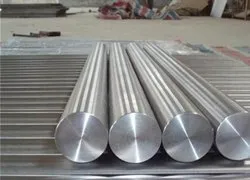Introduction
Machining, a symphony of precision and craftsmanship, encounters a diverse array of materials. Among them, the enigmatic 410 stainless steel takes center stage. With its distinctive composition and properties, the question arises: what are the machining characteristics of 410 stainless steel? In this comprehensive article, we embark on a journey through the intricate world of machining this alloy, exploring its machinability challenges, techniques, considerations, and the interplay of its composition on the machining process.
1. The Dance of Machining: Crafting Precision
 Machining, a dance between man and material, demands an understanding of the material’s unique characteristics. In the realm of stainless steels, 410 stainless steel poses a distinct challenge and opportunity for machinists seeking precision.
Machining, a dance between man and material, demands an understanding of the material’s unique characteristics. In the realm of stainless steels, 410 stainless steel poses a distinct challenge and opportunity for machinists seeking precision.
2. 410 Stainless Steel at a Glance: Composition Recap
410 stainless steel’s composition comprises:
- Chromium (Cr): 11.5% – 13.5%
- Carbon (C): 0.08% – 0.15%
- Manganese (Mn): Up to 1.0%
- Silicon (Si): Up to 1.0%
- Phosphorus (P): Up to 0.04%
- Sulfur (S): Up to 0.03%
The alloy’s composition influences its machinability characteristics.
3. The Machinability Enigma: Unraveling the Puzzle
Machining 410 stainless steel presents challenges due to its composition:
- High Carbon Content: The alloy’s high carbon content contributes to its hardness and wear resistance, making machining more demanding.
- Work Hardening: The alloy’s martensitic structure leads to work hardening during machining, increasing cutting forces.
4. Tools of the Trade: Selecting the Right Tooling
Choosing the appropriate tooling is pivotal:
- Hard Tooling: Carbide tools with high hardness are effective for machining 410 stainless steel.
- Coatings: Coated tools enhance tool life and improve performance.
5. Cutting Techniques: Navigating the Terrain
Machining techniques must account for the alloy’s characteristics:
- Low Cutting Speeds: Slow cutting speeds reduce heat buildup and tool wear.
- Depth of Cut: Smaller depths of cut prevent excessive tool wear.
6. Cooling Conundrum: Taming Heat in Machining
Managing heat buildup is crucial:
- Coolant Application: Proper coolant application dissipates heat and reduces thermal stresses.
- Air Blast: Air blasts aid in chip evacuation and cooling during machining.
7. Chip Control and Swarf Management
Effective chip control enhances machining:
- Chip Breakers: Specialized chip breakers improve chip control and prevent chip entanglement.
- Swarf Management: Proper swarf management prevents re-cutting and tool damage.
8. Surface Finish Symphony: Achieving Excellence
 Achieving desired surface finish demands finesse:
Achieving desired surface finish demands finesse:
- Tool Geometry: Proper tool geometry influences surface quality.
- Finishing Passes: Light finishing passes enhance surface finish.
9. Applications and Industries
Machined 410 stainless steel finds applications in:
- Industrial Components: Machined parts endure demanding conditions in industrial equipment.
- Cutlery and Culinary Tools: Machined blades benefit from the alloy’s hardness and corrosion resistance.
- Aerospace: Machined components in aircraft structures harness the alloy’s strength.
10. Expert Insights: Machining Best Practices for 410 Stainless Steel
Experts offer valuable recommendations:
- Slow Cutting Speeds: Slower speeds reduce heat buildup and tool wear.
- Effective Cooling: Proper coolant application is vital for temperature control.
- Tool Selection: Choose tools with high hardness and proper coatings.
11. Challenges and Mastery
Machining 410 stainless steel requires mastery:
- Work Hardening: Proper tool selection and cutting techniques mitigate work hardening.
- Heat Management: Effective cooling and chip control prevent heat-related issues.
12. Frequently Asked Questions (FAQ)
Q1: Is machining 410 stainless steel more challenging than other stainless steel grades?
A1: Yes, the high carbon content and work hardening tendencies of 410 stainless steel make it more challenging to machine compared to other stainless steel grades.
Q2: What are some common issues faced when machining 410 stainless steel?
A2: Challenges include work hardening, tool wear, and heat buildup during machining.
Q3: Are there specific machining techniques that work well with 410 stainless steel?
A3: Slower cutting speeds, effective cooling, and proper chip control techniques are beneficial for machining 410 stainless steel.
Q4: Can machined components maintain their corrosion resistance?
A4: Proper machining techniques and post-machining treatments can help maintain corrosion resistance, but careful execution is essential.
Q5: What industries benefit from machining 410 stainless steel?
A5: Industries such as industrial manufacturing, cutlery, aerospace, and automotive utilize machined 410 stainless steel components due to their hardness and strength.
Conclusion
Machining 410 stainless steel is a journey that demands precision, finesse, and a deep understanding of its composition and characteristics. While challenges like work hardening and heat buildup may arise, mastery of the art of machining this alloy unlocks its potential for precision components across diverse industries. From selecting the right tooling to employing effective cooling strategies, machinists navigate a complex landscape to craft components that meet exacting standards. With expert insights and meticulous execution, the symphony of machining 410 stainless steel results in precision creations that endure and excel in their respective applications.
